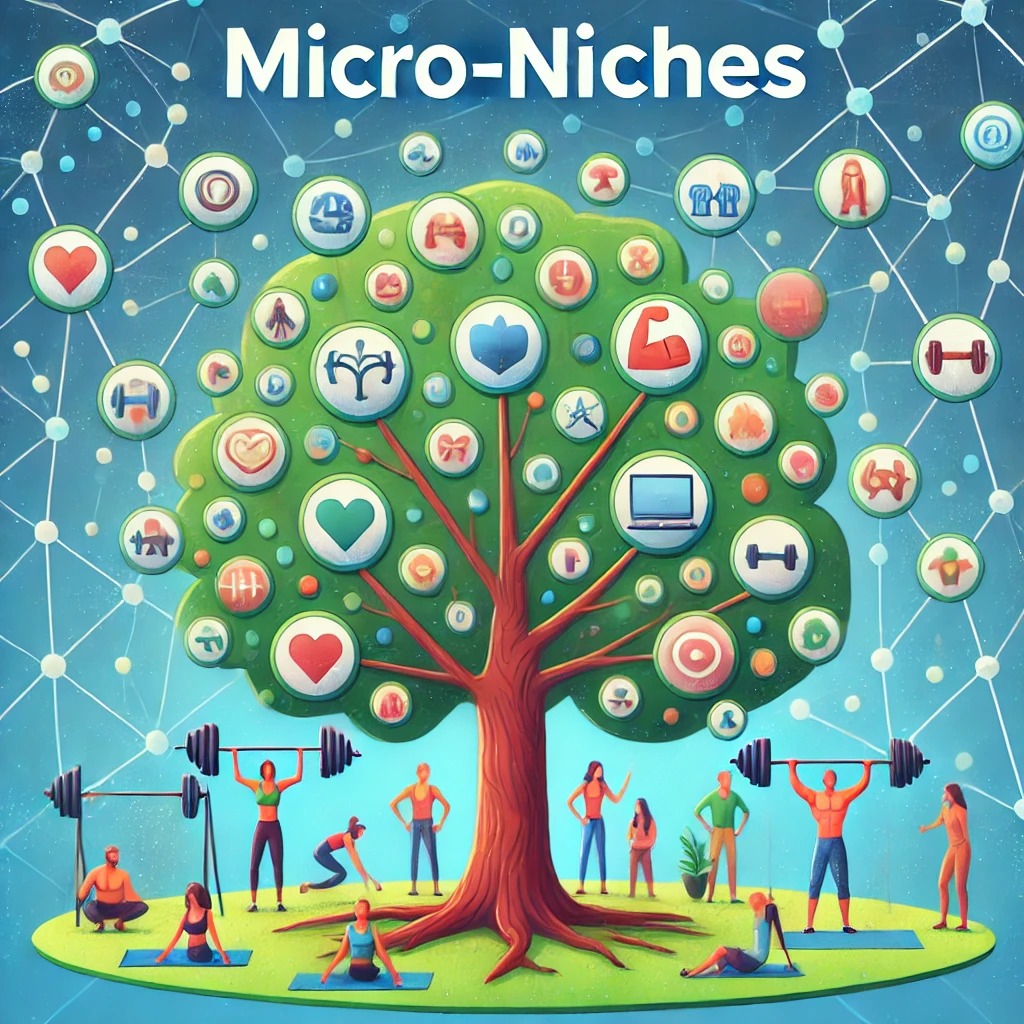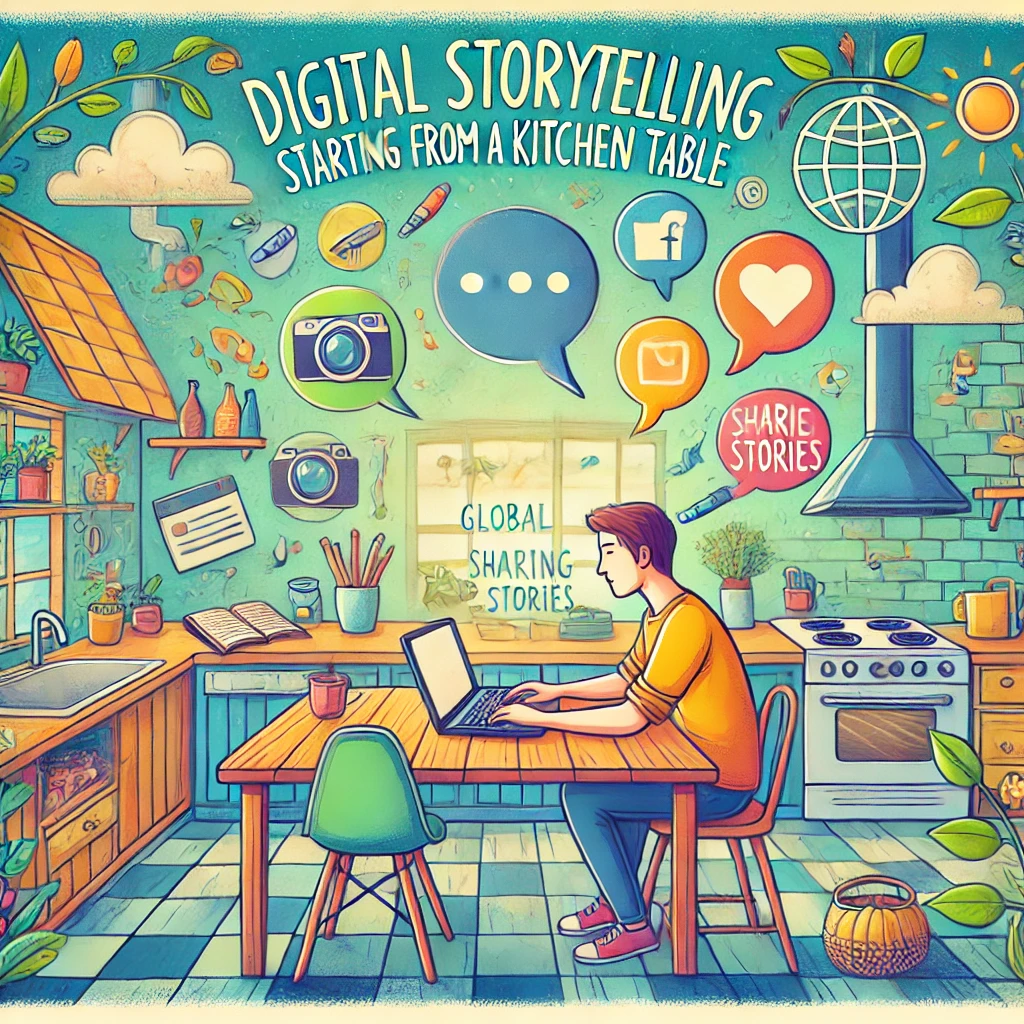
The Hidden Power of Micro-Niches
Or - How to Thrive Online by Getting Ultra-Specific
If you’re just starting your online journey, the idea of narrowing your focus might seem risky.
Why target a small group when you could appeal to a broader audience?
Well, that’s the secret power of micro-niches—by getting ultra-specific, you can actually grow faster and more effectively.
What is a Micro-Niche?
A micro-niche is a highly specialised segment within a broader niche. It focuses on a specific audience with unique needs or interests. For example, instead of just blogging about fitness, a micro-niche would be something like ‘yoga for busy mums’ or ‘strength training for people over 50’.
By being specific, you can speak directly to the needs and desires of a smaller, but more engaged audience. This builds trust, loyalty, and a community of people who feel understood and valued.

Why Micro-Niches Matter
- Less Competition, More Visibility – General niches are crowded, but micro-niches have less competition, making it easier for beginners to rank higher on search engines.
- Stronger Audience Connection – By addressing very specific needs, you can create deeper connections with your audience, turning them into loyal supporters.
- Higher Conversion Rates – People searching for specific solutions are usually ready to take action, whether it’s buying a product, signing up for a newsletter, or joining a community.
Real-Life Success Stories in Micro-Niches
- Nerd Fitness – Instead of a general fitness blog, Nerd Fitness targets ‘nerds’ and ‘gamers’ who want to get fit. By using relatable language and gamifying fitness, they’ve built a loyal community.
- The Points Guy – This blog focuses specifically on maximising credit card points for travel. By getting ultra-specific, they’ve become the go-to resource for a niche audience.
Getting Started: Finding Your Micro-Niche

- Identify Your Passion and Expertise –
Think about what you genuinely enjoy and have knowledge about. Your enthusiasm will keep you motivated, especially in the early stages. For example, if you love gardening but find traditional gardening blogs too broad, you could focus on a micro-niche like ‘urban gardening in small spaces’ or ‘gardening for mental health’.
By choosing something close to your heart, you’ll find it easier to create content consistently.
Research Your Audience’s Pain Points –
Get to know your audience deeply.
What keeps them awake at night? What challenges are they facing? Use tools like AnswerThePublic, Quora, and social media groups to discover the specific questions people are asking.
For example, if you’re in the parenting niche, you might find that parents of children with food allergies are desperately looking for meal ideas, leading you to a micro-niche like ‘allergy-friendly school lunches’.
Analyse the Competition –
Just because a micro-niche is small doesn’t mean there’s no competition.
Check out what’s already out there and look for gaps. Are your competitors only offering basic advice? Can you go deeper? Can you create more engaging content like video tutorials or step-by-step guides?
Test and Refine –
Don’t be afraid to start small and experiment.
Create a few blog posts or videos, and see how your audience responds. Pay attention to feedback and engagement. If something resonates, do more of it. If not, don’t hesitate to pivot and narrow down your focus even more.
Leveraging Micro-Niches for Monetisation
One of the most significant advantages of micro-niches is that they often attract a highly engaged and loyal audience. This opens up numerous monetisation opportunities, such as:
Affiliate Marketing –
Because your audience has specific needs, recommending targeted products is easier and more effective. For instance, if your micro-niche is ‘eco-friendly parenting’, promoting eco-friendly baby products through affiliate marketing can be highly lucrative.
Digital Products –
Micro-niches are perfect for selling digital products like e-books, online courses, or printables. If you’re in the productivity niche, you could create a digital planner specifically for freelancers or remote workers.
Sponsored Content and Collaborations –
Brands love to collaborate with niche influencers who have loyal followers. Once you establish yourself as an authority in your micro-niche, you can work with brands that align with your audience’s interests.
Membership Sites or Premium Content –
If your audience is highly engaged, consider creating a membership site where they can access exclusive content, tutorials, or community support. This works particularly well for educational niches, like language learning or advanced DIY crafts.
Overcoming Challenges in Micro-Niches
While micro-niches offer many benefits, they come with their own set of challenges:
- Limited Audience Size – By definition, a micro-niche targets a smaller group, so your potential audience will be limited. However, a smaller but highly engaged audience can be more valuable than a large, uninterested one.
- Content Exhaustion – It’s easy to feel like you’ve exhausted all content ideas in a micro-niche. The key is to dig deeper, explore related subtopics, and keep engaging with your audience to understand their evolving needs.
- Scaling and Growth – Growing within a micro-niche requires strategic thinking. Once you’ve established authority, consider expanding slightly into related areas. For example, if you started with ‘yoga for busy mums’, you could gradually expand to ‘wellness for busy mums’, including nutrition and mental health.
- Staying Relevant – Trends and needs can change quickly, especially in digital niches. Keep an eye on industry trends, continuously engage with your audience, and adapt your content strategy accordingly.
These challenges are real but manageable with the right mindset and strategy. Micro-niches are not about limiting yourself—they’re about focusing your energy where it matters most.
- Identify Your Passion and Expertise – Think about what you love and know well. Your micro-niche should be something you’re excited about because passion drives persistence.
- Research Your Audience’s Pain Points – What are the specific problems or needs within your niche? Forums, social media groups, and keyword research tools can help you discover what people are looking for.
- Test and Refine – Start small and see how your audience responds. Don’t be afraid to adjust and narrow down even further as you learn more about your audience.
And Finally…
Choosing a micro-niche might feel like limiting yourself, but in reality, it’s the opposite.
By getting ultra-specific, you can stand out in a crowded online world, build a loyal community, and grow faster than you ever thought possible. If you’re just starting out, don’t be afraid to go small. Sometimes, the smallest niches have the biggest potential.
Here’s a little transparency: My website contains affiliate links. This means if you click and make a purchase, I may receive a small commission. Don’t worry, there’s no extra cost to you. It’s a simple way you can support my mission to bring you quality content.











